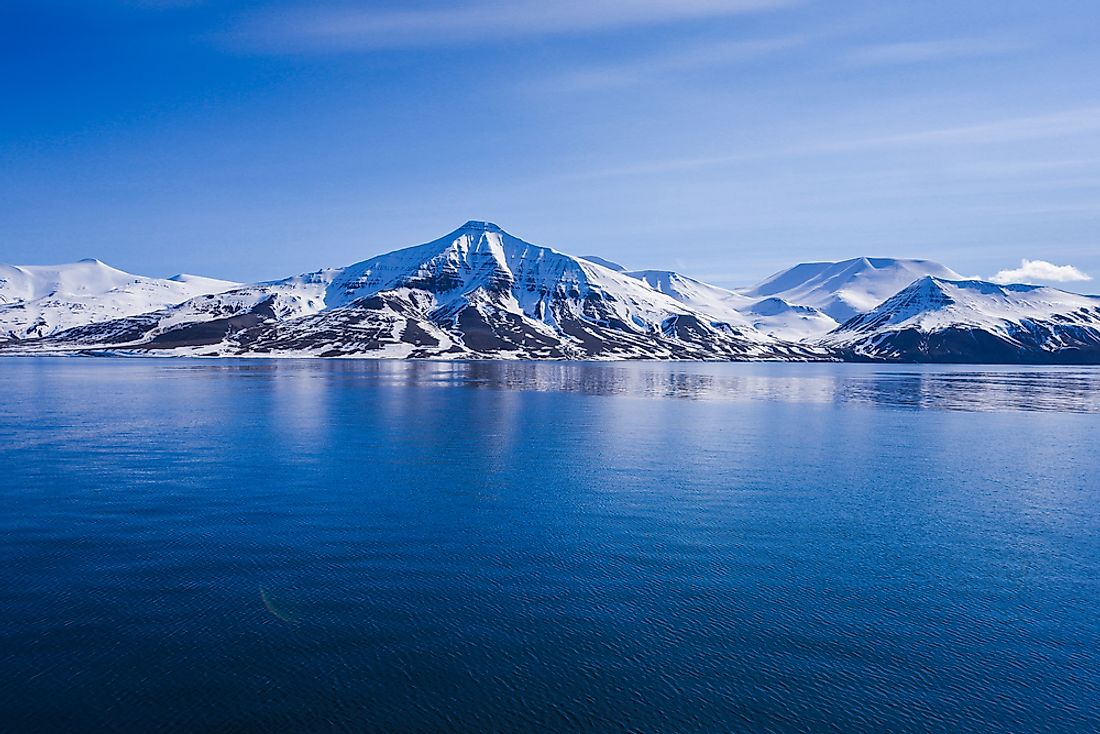Which Ocean Is the Smallest?

With an area of approximately 5.4million square miles, the Arctic ocean is the smallest of the five oceans on Earth. Although numerous oceanographers refer to it as the Arctic Sea or the Arctic Mediterranean Sea, the IHO (International Hydrographic Organization) recognize it as the 5th ocean in the world. The oceanographers classify it as an inlet of the Atlantic Ocean or the Mediterranean Sea.
Geography and Habitat
Located in the Arctic polar area, this ocean is surrounded by Russia, Alaska, Norway, Greenland, and Canada. The Arctic Ocean is usually covered partially by sea-ice throughout the year, but this does not mean that it is barren. The tunnels on the sea-ice houses algae and bacteria which feed on flatworms among other creatures. The most profound point of the ocean is usually 17,850 ft deep while its average depth is about 12,000 ft. The Arctic has the lowest salinity on average as compared to the others.
The ocean covers a circular basin with an area of approximately 5,427,000 sq mi which is almost as big as Antarctica. The coastline of the Arctic Ocean is about 28,200 miles long. The Arctic Ocean includes Laptev Sea, White Sea, Kara sea, Hudson Strait and Bay, Greenland sea, Siberian sea, Chukchi sea, Beaufort and Barents sea among other water bodies. The Bering Strait connects it to the Pacific ocean. The Arctic connects to the Atlanta ocean via the Labrador and Greenland seas.
Sea Ice in the Arctic Ocean
A bigger percentage of the ocean is occupied by sea ice which varies in thickness and extent. The mean of the ice’s extent has been reducing since 1980 from 6.23 million sq mi at a constant rate of 3% after every ten years. The seasonal variation is about 2,702,700 sq mi, with the minimum in September and maximum in April. The sea-ice can be moved and rotated by the ocean and wind currents. The icebergs are made from the glaciers in northeastern Canada and western Greenland. Occasionally the icebergs break-away from the northern island of Ellesmere and they can be very dangerous to ships.
The Underground Features of the Arctic Ocean
The Lomonosov Ridge is an underground ridge which helps divide the north-polar basin into the Eurasian drainage which is 14,800 ft deep and the Amerasian basin which has a depth of approximately 13,000 ft. The floor of the Arctic has basins, ocean deeps, abyssal plains and the fault block ridges. The most profound point of the ocean is the Litke deep of the Eurasian drainage area which is about 17,880 ft deep. The first basins divide further into the Nansen, Amundsen, Makarov and Canada basins.
Flora and Fauna in the Arctic Ocean
The rare oceanic species living in the ocean includes whales and walruses. The Arctic ecosystem is quite fragile and it is slow to recover and change from damage or disruption. The banded gunnel and lion’s mane jellyfish are abundant in the Arctic. The only flora surviving in this ecosystem is the phytoplankton which plays a significant role in the ocean ecosystem.











